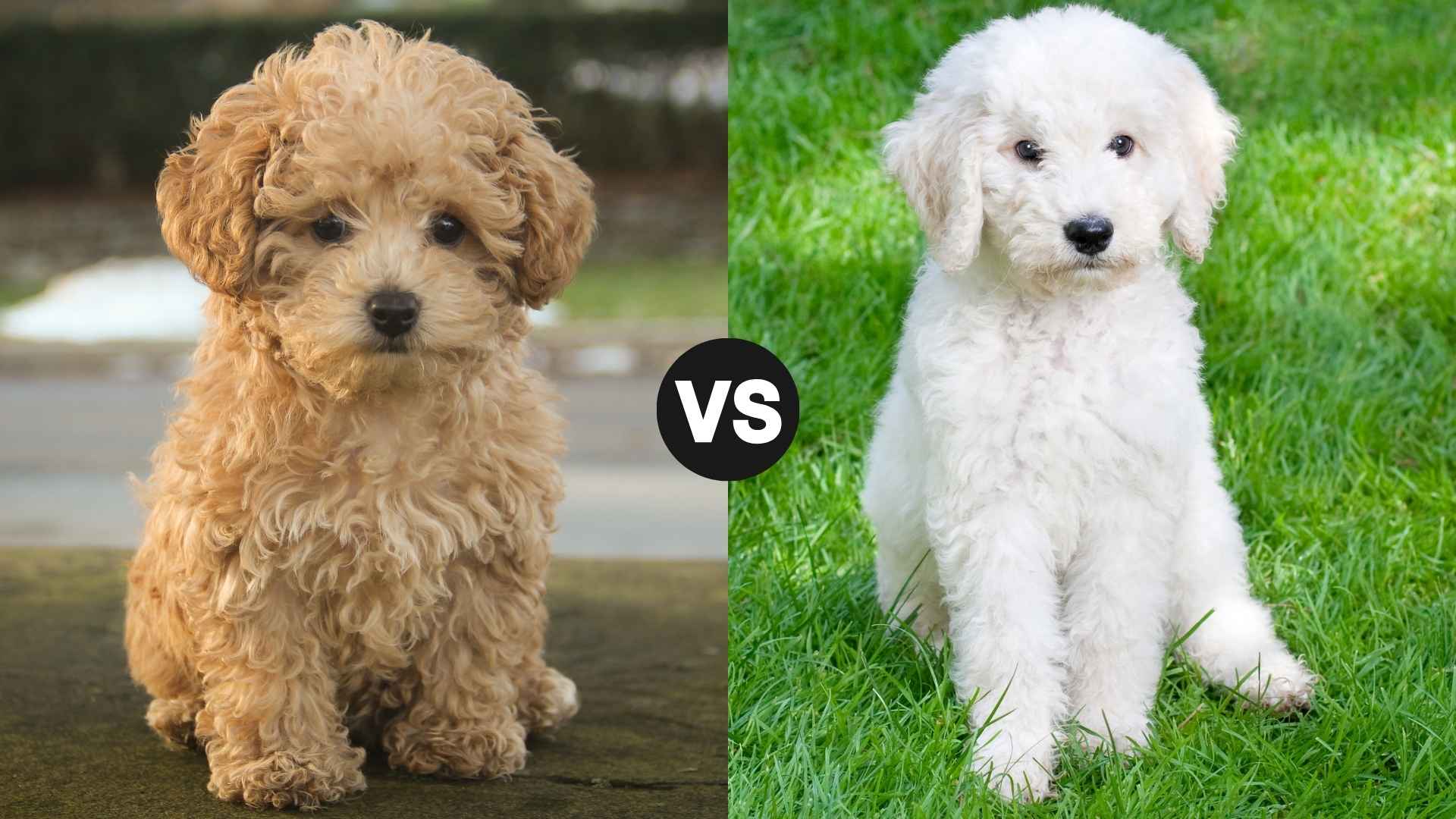When it comes to stylish curls and off-the-charts smarts, Poodles and Labradoodles rule the canine catwalk.
One is a pedigreed classic with a long history of elegance and intelligence; the other is a modern designer dog bred for charm, hypoallergenic coats, and those “Did-I-just-see-a-teddy-bear?” looks. But which one truly fits your lifestyle?
It’s the age-old question for curly-coated dog lovers: go purebred or doodle it up? Poodles come in three sizes (standard, miniature, and toy), and they’re brainy, graceful, and loyal to the core. Labradoodles bring in Labrador Retriever friendliness with Poodle smarts and fluff—plus a good dose of goofball.
In this ultimate showdown, we’re comparing the ins and outs of both breeds. Whether you’re drawn to classic sophistication or playful charm, we’ll help you figure out who belongs on your couch—and in your heart. Spoiler: It’s a win-win either way.
Poodle vs. Labradoodle
Height Comparison & Weight Differences
When it comes to classy curls and wagging tails, Poodles and Labradoodles are the Beyoncés and Bruno Mars of the dog world—stylish, smart, and always ready for the spotlight. But how do they compare side-by-side?
Poodle
Born in Germany (yep, not France), the Poodle was originally a water retriever—fetching ducks in style. Eventually, France claimed them as fashion icons, and boom—a permanent spot in luxury handbags (emotionally, not literally). Purina says Miniature and Standard Poodles are classified as Non-Sporting breeds, while Toy Poodles belong to the Toy group.
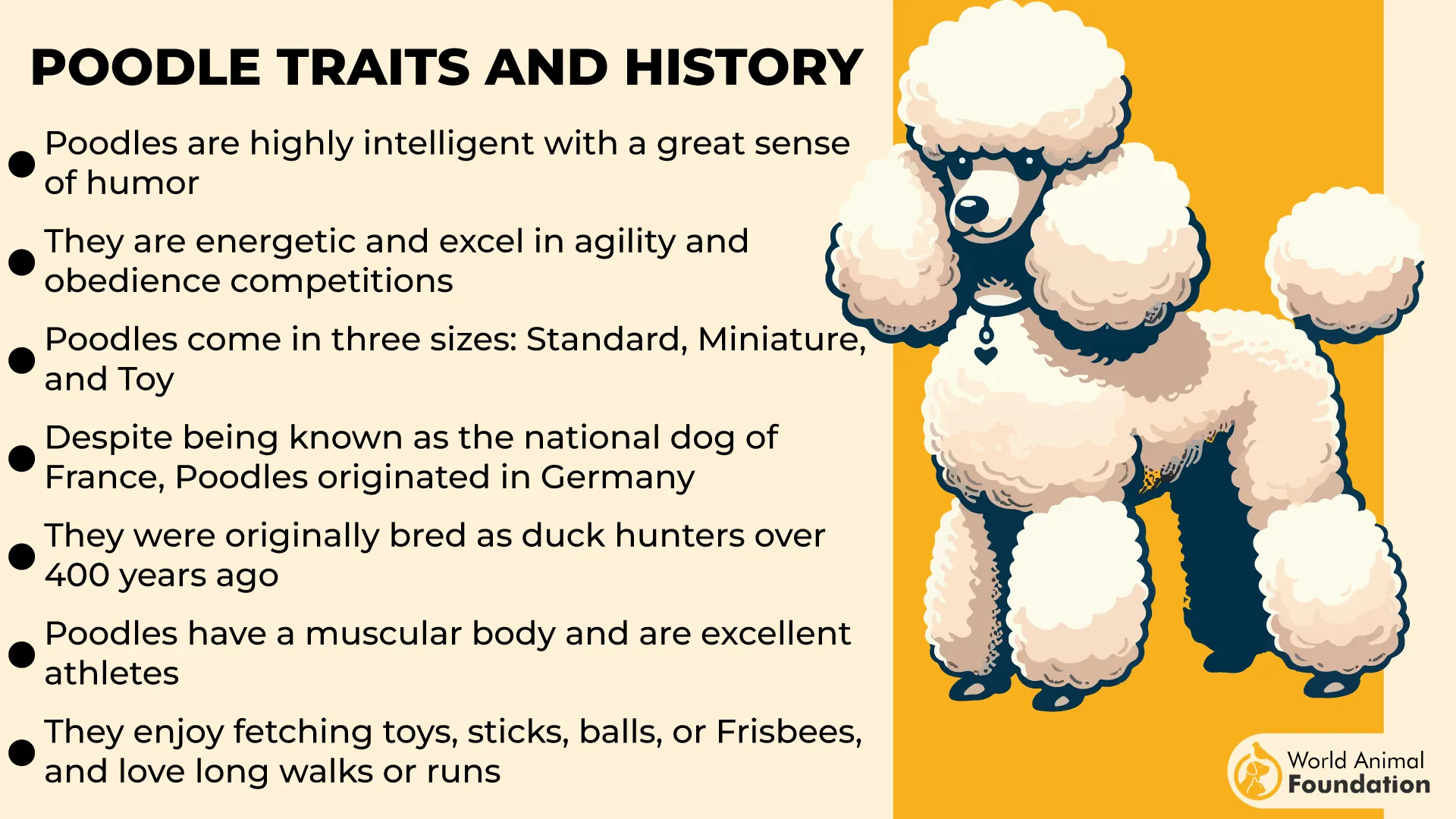
Toy Poodle
Height: Up to 10 inches
Weight: 6–9 lbs
Small but mighty—the ultimate lap warmers who fit in the tiniest spaces.
Miniature Poodle
Height: 11–15 inches
Weight: 12–20 lbs
Perfectly portable with plenty of personality packed in.
Standard Poodle
Height: 18–24 inches
Weight: 40–70 lbs
The elegant giants—tall, proud, and always commanding attention.
Labradoodle
The millennial of dog breeds—created in the late 1980s by an Australian breeder who wanted a hypoallergenic guide dog. A Labradoodle is a crossbreed dog created by mixing a Labrador Retriever and a Poodle. Imagine a Labrador’s charm plus a Poodle’s poise—voilà, Labradoodle!

Miniature Labradoodle
Height: 14–16 inches
Weight: 15–30 lbs
Small enough to be your compact companion, big enough to keep you on your toes.
Medium Labradoodle
Height: 17–20 inches
Weight: 30–45 lbs
The all-rounder size—adaptable, friendly, and full of energy.
Standard Labradoodle
Height: 21–24 inches
Weight: 50–75 lbs
The larger-than-life lovable goof—big heart, big paws, big personality.
Coat Type and Texture
Poodles and Labradoodles may both rock the “curly and cute” look, but their coats come with different textures, types, and regular grooming needs. Let’s brush through the details (pun totally intended).
Poodle
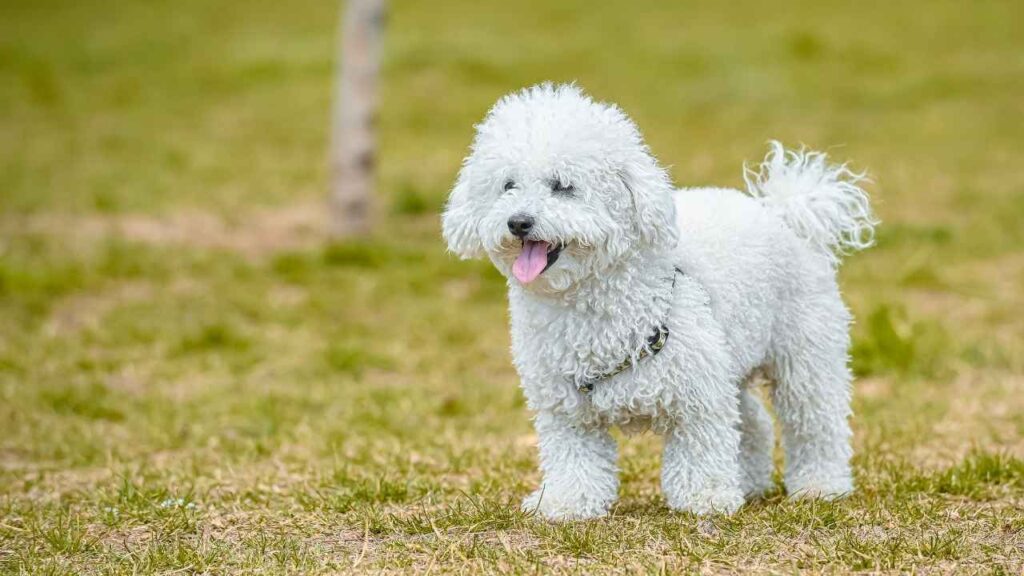
Coat Type: Dense, curly, and non-shedding (aka a dream for people with allergies).
Texture: Tight curls that feel like soft wool—luxurious, but high-maintenance.
Grooming Needs: Needs daily brushing and professional grooming to avoid turning into a walking cotton ball.
Labradoodle
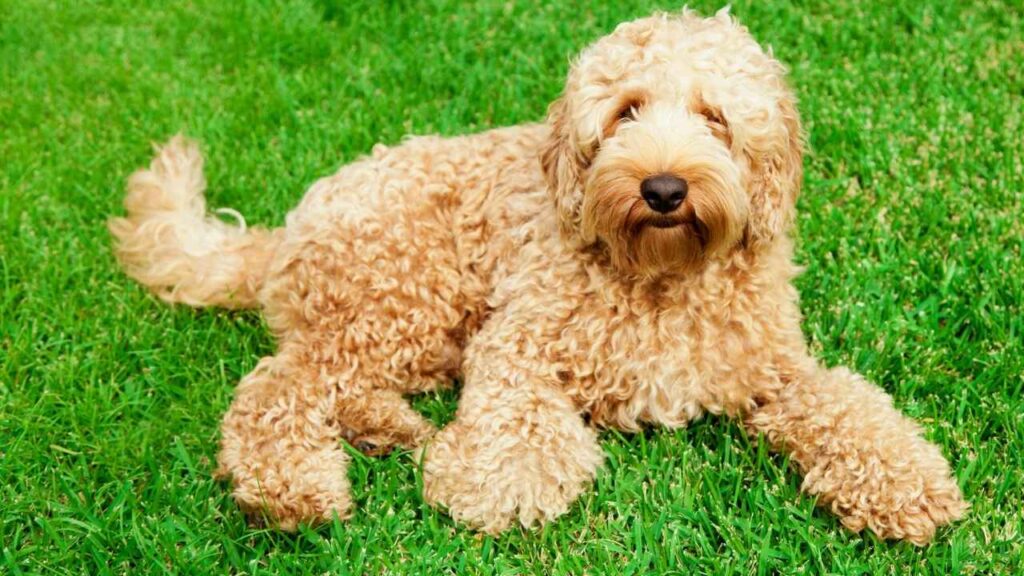
Coat Type: Comes in three fabulous styles:
Wool coat: Tight curls, similar to a Poodle—low shedding, high maintenance.
Fleece coat: Soft, wavy, and silky—most popular and allergy-friendly.
Hair coat: Straighter and more Labrador-like—less allergy-friendly, more shedding.
Texture: Can range from fluffy cloud to shaggy teddy bear—either way, cuddles are guaranteed.
Grooming Needs: Labradoodles frequently take after Poodles in having a hypoallergenic, low-shedding coat, making them a popular choice for people with allergies. Needs regular brushing, especially fleece and wool types, to prevent matting.
Temperament and Personality Traits
Behind those adorable eyes and fluffy coats are personalities that shine just as bright. Here’s what to expect:
Poodle

✅ Highly intelligent dog – one of the smartest dog breeds
✅ Elegant and proud – natural-born show-offs (in a charming way)
✅ Incredibly loyal and lovable breed that deeply bonds with its people
✅ Alert and vocal – will bark if someone dares approach your door
✅ Emotionally sensitive – reads your mood like a furry therapist
✅ Needs mental stimulation – or will invent their own games (like “redecorate the couch”)
Labradoodle
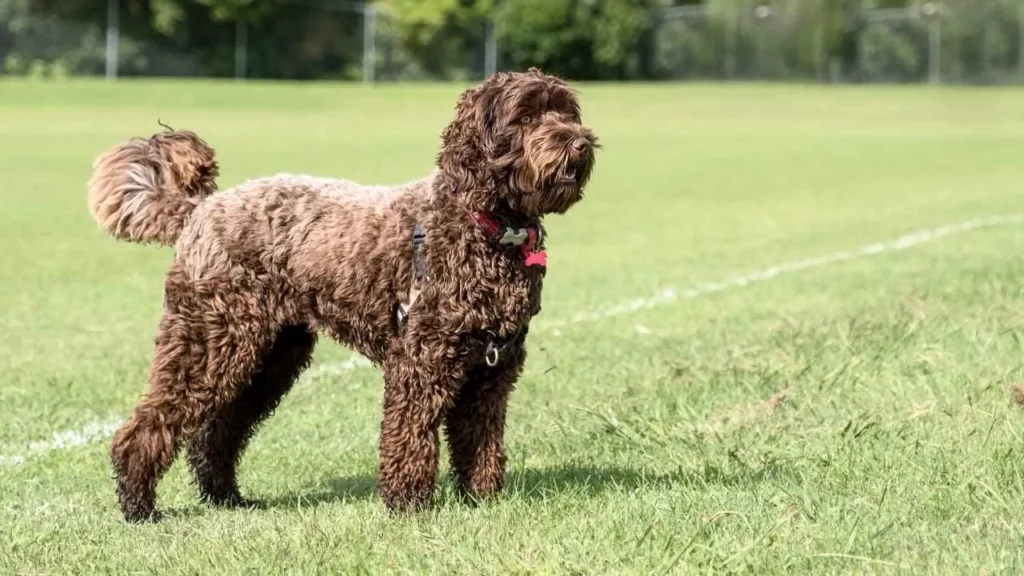
✅ Friendly and sociable – the life of every dog park party
✅ Loving and affectionate – will follow you everywhere, even to the bathroom
✅ Smart but goofy – will learn tricks fast, then clown around mid-performance
✅ Great with kids and families – the ultimate playmate and cuddle buddy
✅ Gentle and non-aggressive – a lover, not a fighter
✅ Eager to please – just wants you to be proud (and maybe hand over that treat)
Guarding Instincts and Protective Behavior
If you’re wondering whether your fluffy companion will double as a security system or just roll over for belly rubs, here’s the scoop on how Poodles and Labradoodles behave when it’s time to protect their pack.
Poodle
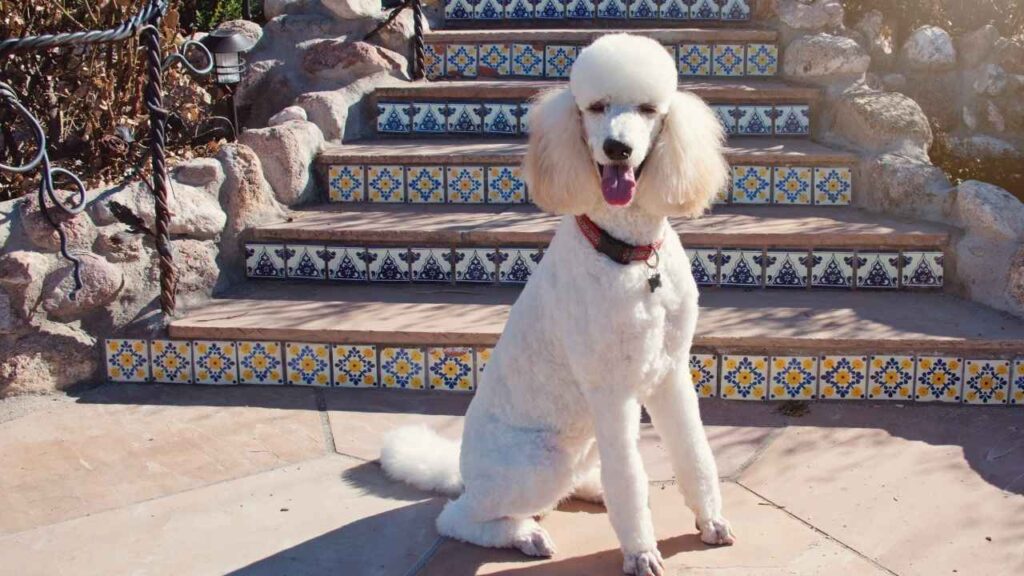
Not exactly guard dogs, but they’ll definitely bark to alert you if something’s off (or if a leaf moves suspiciously). They’re more “concerned citizen” than “bodyguard,” but their loyalty is solid.
Labradoodle
Friendly? Yes. Fierce? Not so much. Labradoodles have low guarding instincts and are more likely to offer a snack to the intruder than scare them off. That said, they can be protective of their family, especially if raised to be confident and alert, but aggression isn’t in their default settings.
Think of it this way:
Poodle = “Alert and a little judgy.”
Labradoodle = “Chill and very huggy.”
Lifespan and Health Outlook
Let’s talk about the years you’ll get to spend with your fluffy best friend—and what health issues to watch out for along the way. Spoiler: Both breeds have pretty good lifespans, but they do come with a few “user manual” notes.
Poodle
Lifespan: 12–15 years
Poodles are generally healthy but can inherit a few diva-level health problems like:
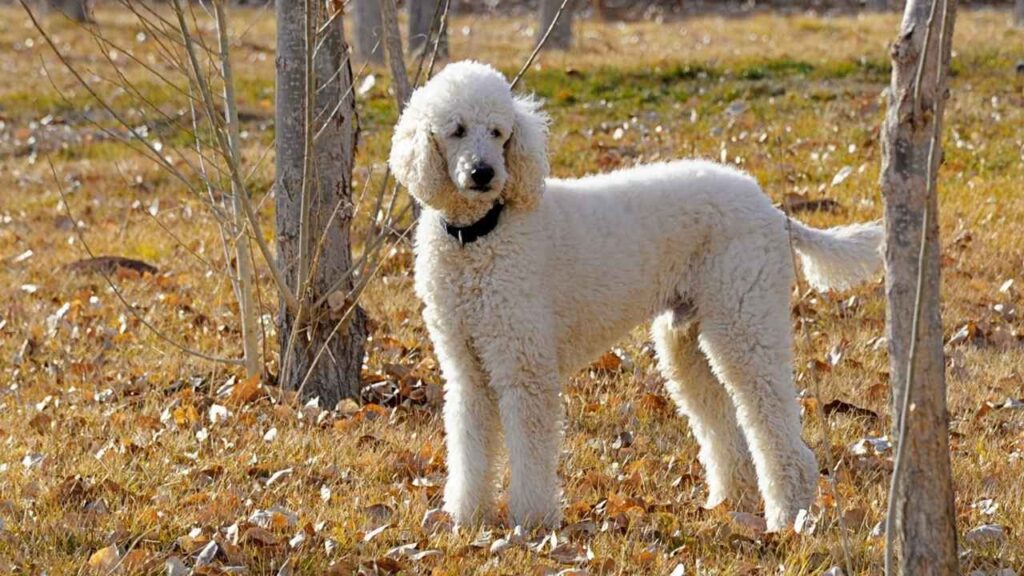
Hip dysplasia
Eye diseases
Progressive retinal atrophy (PRA)
Epilepsy
Addison’s disease.
Thanks to their genetics and careful breeding, Standard Poodles tend to age gracefully, sometimes even sassier in their senior years.
Labradoodle
Life expectancy: 12–14 years
As a mixed breed, Labradoodles often benefit from “hybrid vigor”—meaning they can dodge some breed-specific issues:
Elbow/hip dysplasia
Allergies
Eye conditions like PRA
Ear infections (oh, those floppy ears!) are fairly common.
Fun Fact: With proper care, a healthy diet, daily exercise, and regular checkups, both Poodles and Labradoodles can live long, happy, tail-wagging lives by your side—shedding love, not fur (well, maybe a little fur).
Energy Levels and Activity Needs
Whether you’re into sunrise jogs or prefer Netflix and naps, it helps to know your pup’s energy vibe. Spoiler: Both of these breeds bring the bounce, but in slightly different ways.
Poodle
High-energy and mental stimulation addicts. They love walks, runs, training, puzzle toys—basically anything that lets them flex those brain muscles and burn energy. As per Britannica, Poodles are incredibly versatile and enthusiastic participants in a wide range of dog sports, such as agility, obedience, dock diving, swimming, tracking, nose work, barn hunt, and waterfowl hunting and retrieving.
Ideal for: Active families, people who enjoy dog sports, or someone who never skips leg day.
Labradoodle
Also high energy levels, but with a slightly goofier twist. These dogs are born to play fetch, chase tennis balls, and splash in puddles. They thrive on both physical activity and social time with humans.

Ideal for: Outdoorsy folks, families with kids, or anyone willing to throw a ball 3,452 times in a row.
Pro tip: A tired Poodle or Labradoodle is a well-behaved couch potato. Skip the regular exercise, and your favorite socks will pay the price.
Conclusion: Choosing Between a Poodle and a Labradoodle
When comparing Poodles vs Labradoodles, both breeds are intelligent, highly trainable, and make wonderful companions, especially for active families and allergy sufferers, thanks to their intelligence and hypoallergenic coats. Poodles, recognized by the American Kennel Club, are known for their longer lifespan and consistent energy levels, often requiring at least an hour of activity, like a long walk.
Labradoodles, originally bred by mixing Poodles with other breeds like Labradors, share many of the same qualities, but Labradoodles tend to show youthful exuberance and unique characteristics from their parent breeds.
While these two breeds are fantastic companions and great with other dogs and family members, key differences arise in temperament, grooming needs, and potential genetic conditions, making DNA testing important for avoiding genetic diseases. Whether you’re drawn to a purebred Poodle or an adorable Labradoodle puppy, both are excellent choices for those looking to teach new tricks and enjoy a loving, lifelong bond.


